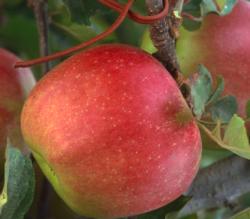Harvesting Fruit

Some fruit will become fully ripe while still on a tree (Santa Rosa Plum and apples) while others (European pears and avocados) need to be harvested and put into cool storage to finish ripening. Some citrus fruit can be held on a tree (some mandarins) while others need to be picked when ripe. When harvesting most fruit, you want to twist and pull the fruit up as opposed to down. (Persimmons, however need to be cut from the tree.) Carefully put fruit into your basket to minimize bruising or breaks in the skin. Harvesting when it’s cool (like in the morning), and cooling fruit as soon as possible, will help promote quality and shelf life. Once your fruit is harvested, you can decide if you want to eat it fresh, freeze, can, dry or cook it.
Each type of fruit tree has certain needs when it comes to harvesting. For information on different varieties, you can check this page The California Backyard Orchard and click on the fruit you are interested in. When you purchase a fruit tree, the tag should indicate approximate time the fruit will be ready. Keep this in mind, and check the fruit regularly for ripening. The exact time of ripening will depend on how hot the summer is – the more heat, the faster fruit will ripen.
For fruit that needs to continue to ripen, keeping the fruit cold is going to slow the process down. An apple, for example, will ripen in 3 days at 70°F and 30 days at 30°F. You can use this to your advantage to extend the season, if you have a large crop.
When you find you have more fruit than you need, consider donating to a food bank in your community. Here is a link to one San Francisco Bay Area organization that is involved in this work, but is not part of the UC system: Village Harvest. There are many others as well. You can look for a food bank in your city or region.
For more in depth information, visit:

